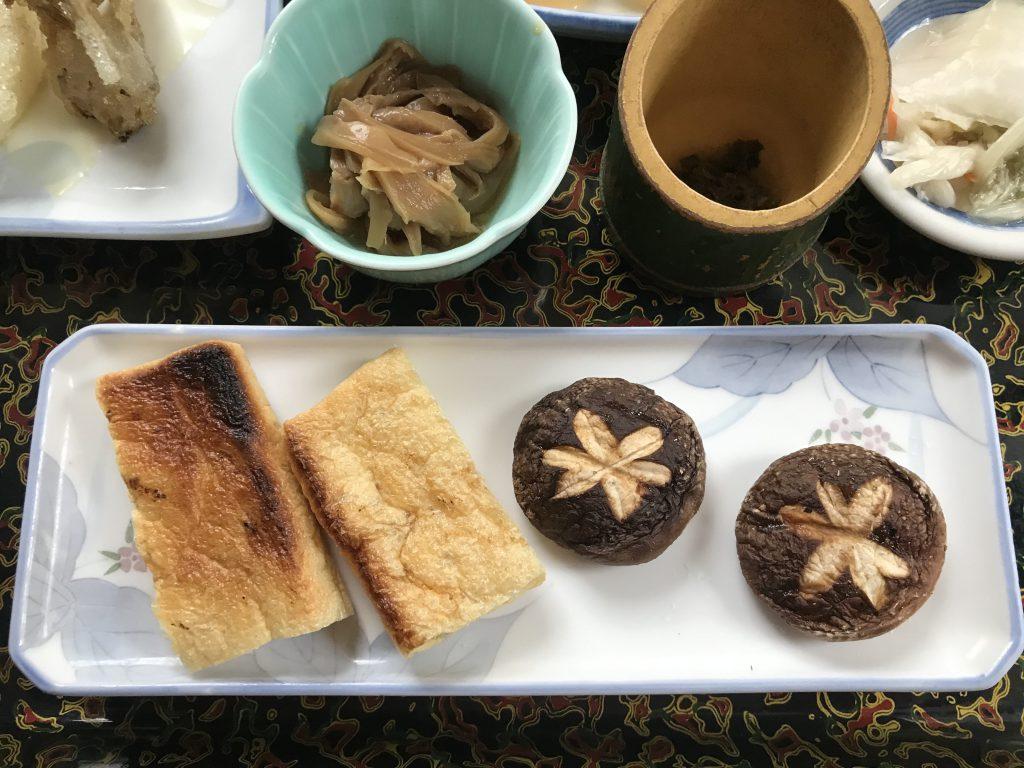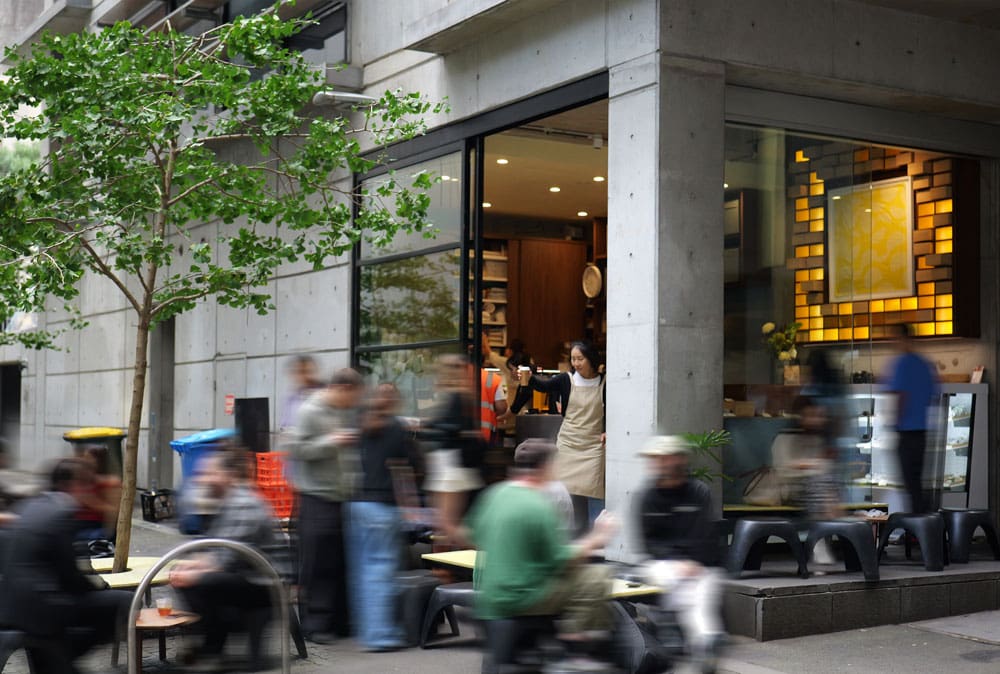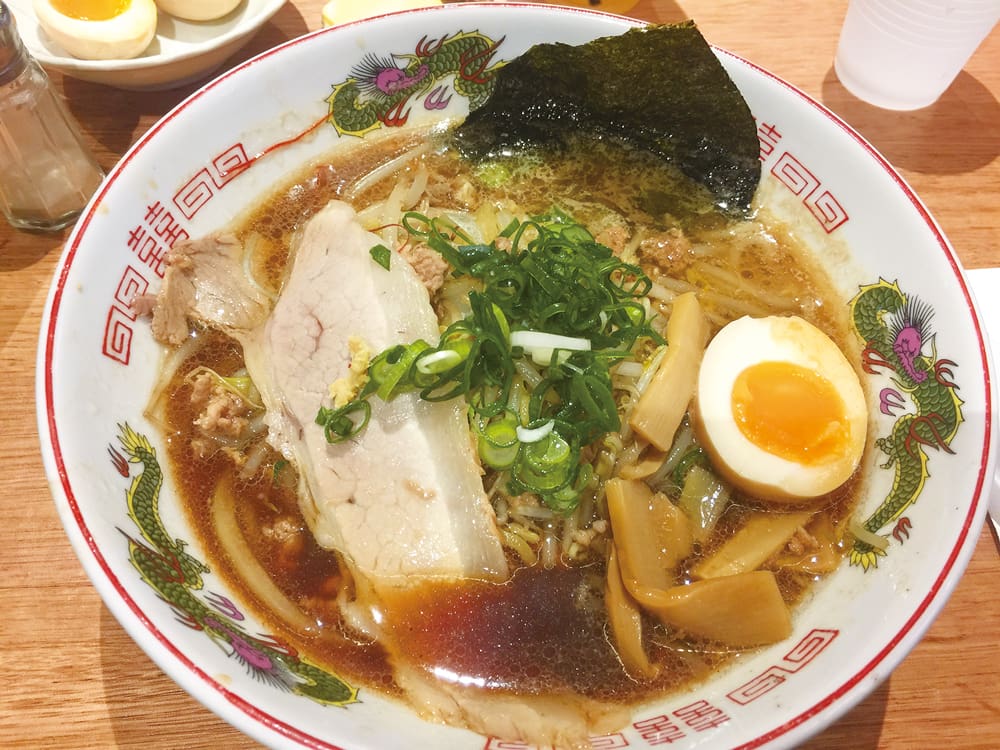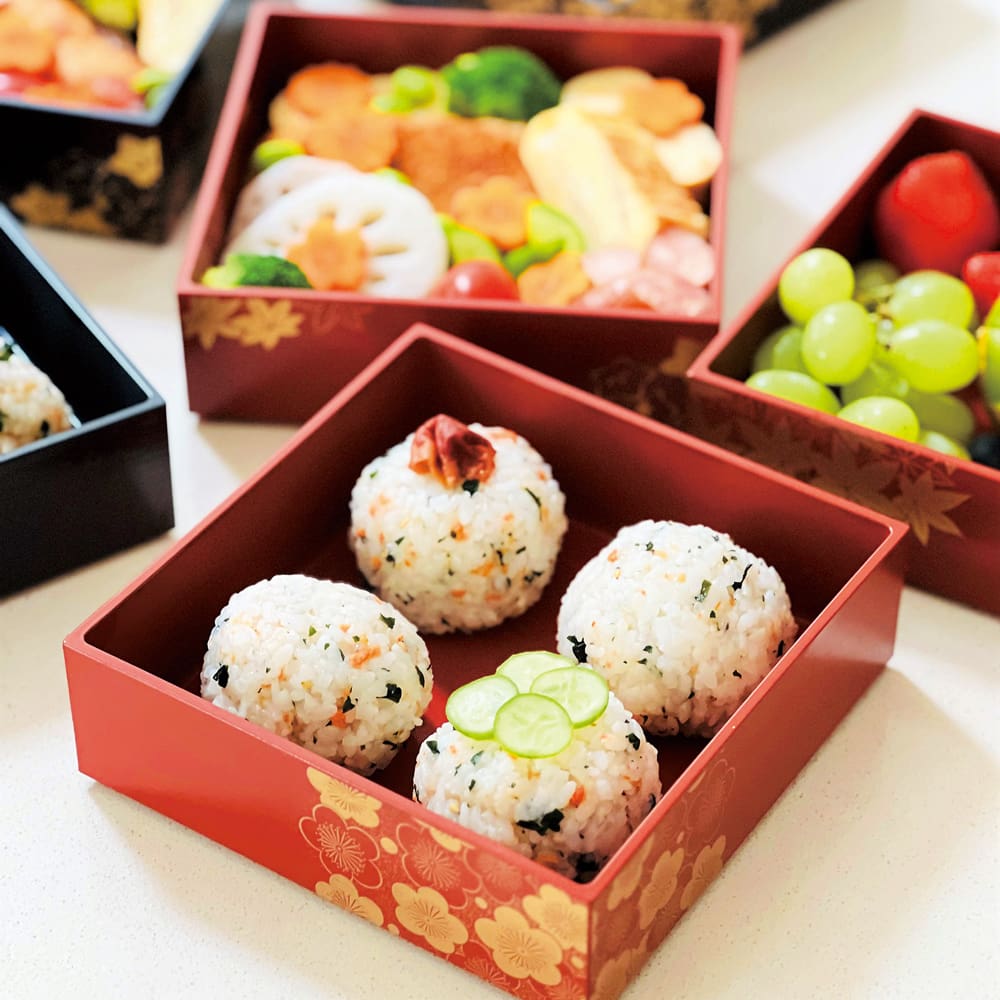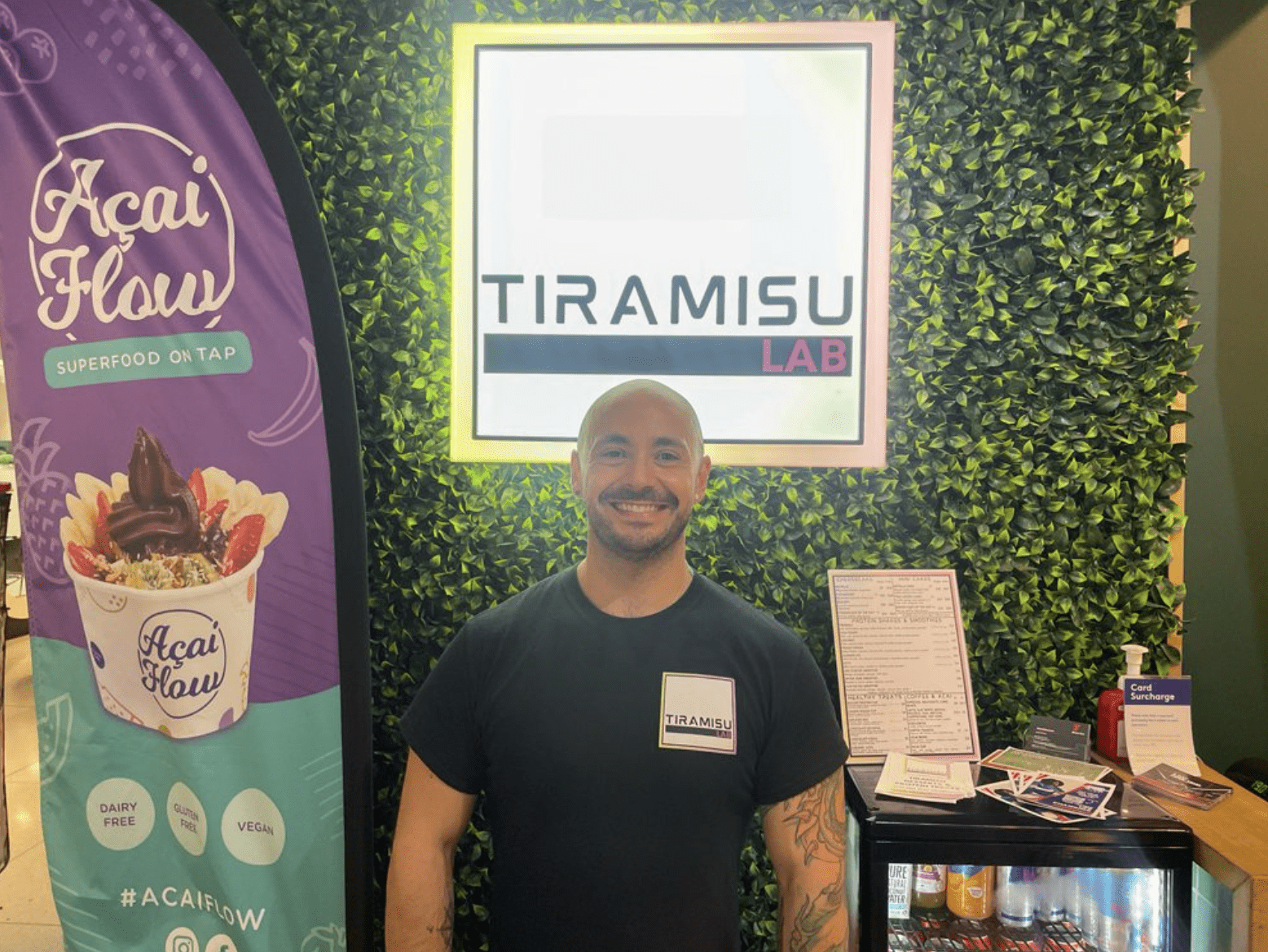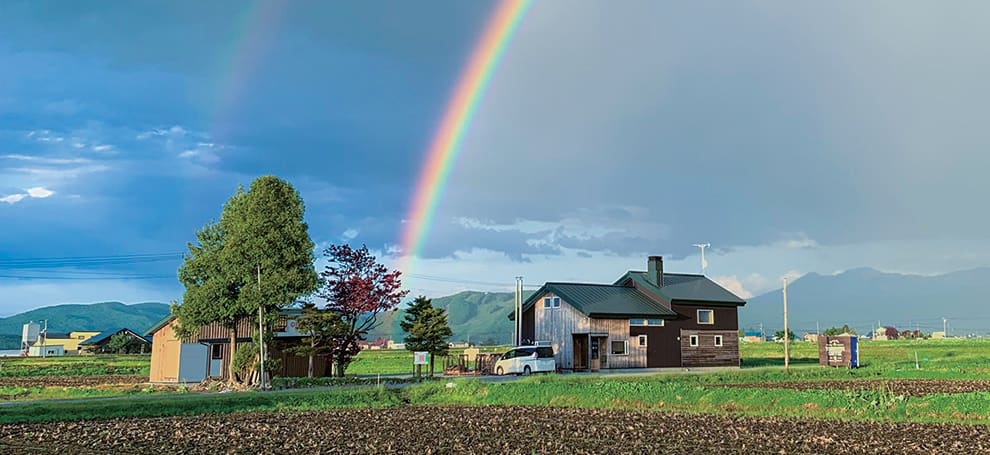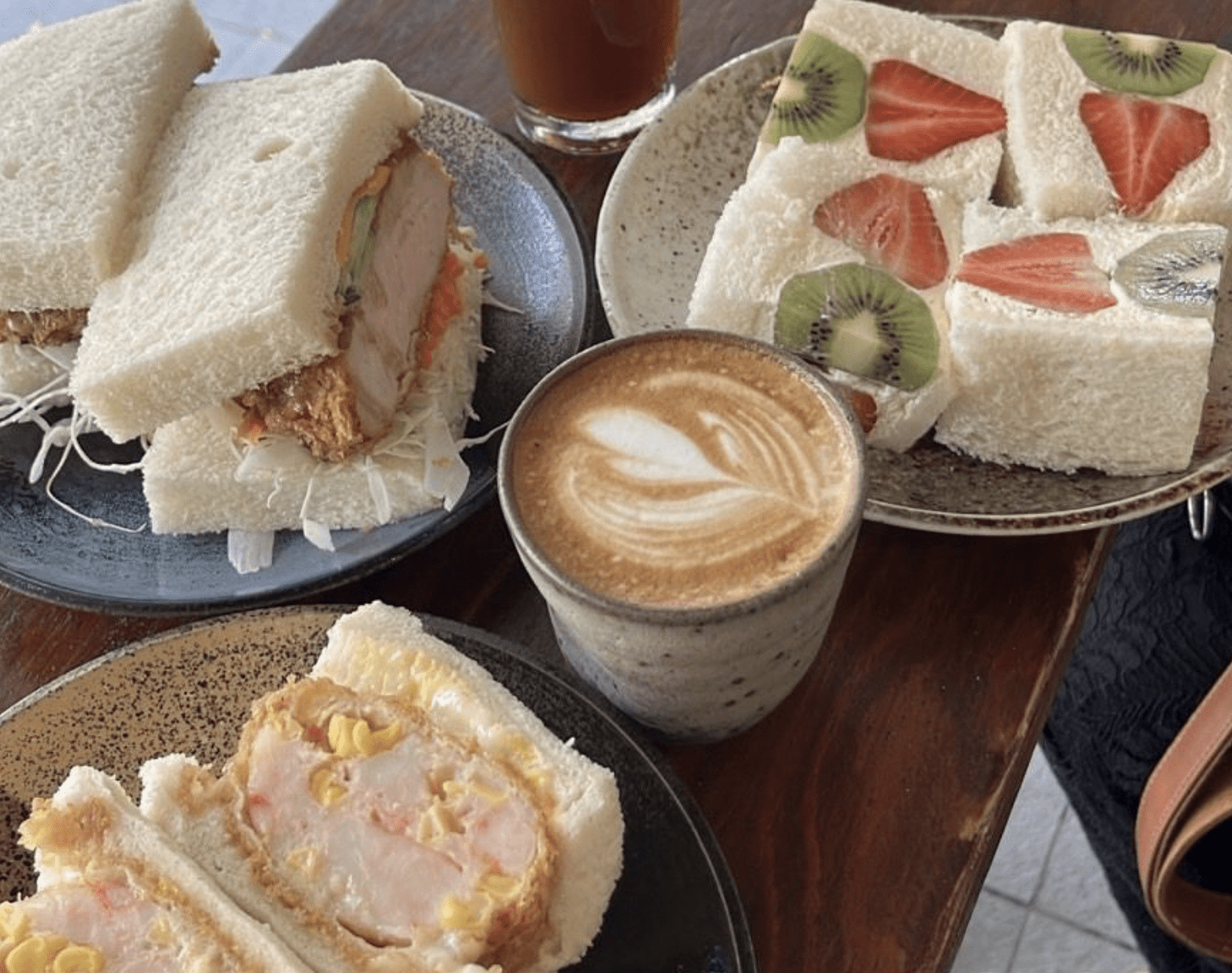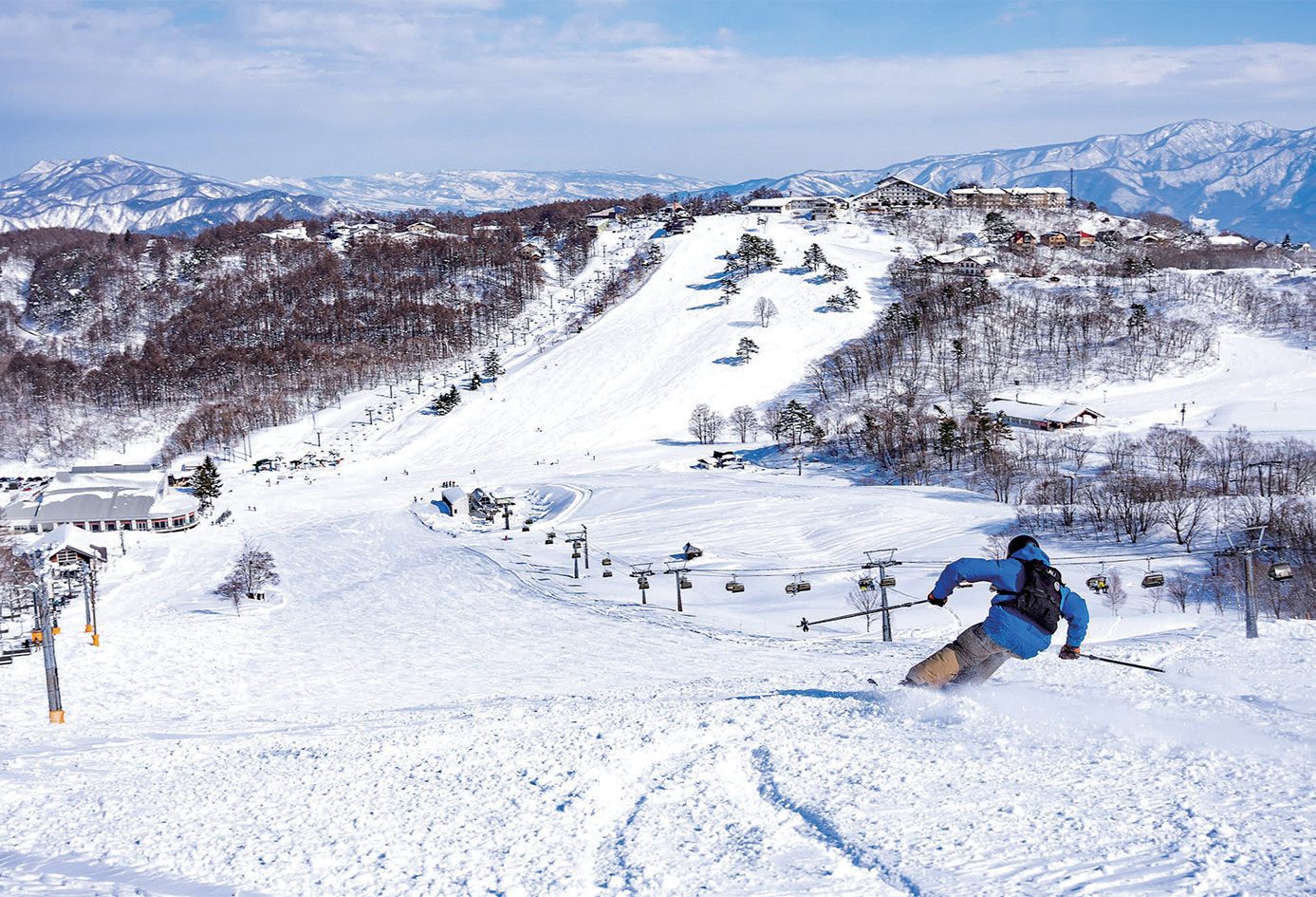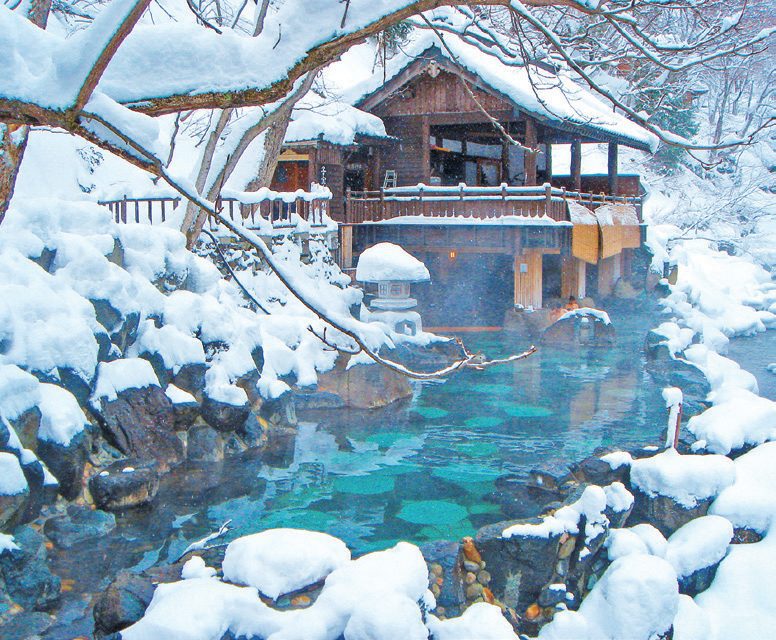As unfortunate as it may be, vegan dining options are quite limited in Japan. Perhaps some readers who have travelled to Japan before have experienced this. If you’ll be spending most of your time in places like Tokyo and Osaka, vegan dining options won’t be difficult to find. However, outside the major cities the lack of vegan options is especially noticeable. Even dishes that may look safe can be deceiving. Vegetable mains are often seasoned with stocks made from fish, and it’s not completely uncommon for salads that would be vegan friendly, if they didn’t have tiny bits of meat mixed in. While not a vegan myself, I have had vegan friends express dismay about the difficulties of eating vegan here. Despite the fact that a little over one hundred years ago the Japanese diet was relatively vegan friendly, meat and animal products have become a larger part of the diet ever since Japan opened its borders. That said, with increased tourism many non-major cities throughout Japan have been expanding their dining options – even more rural areas like Aomori Prefecture’s cosy Kuroishi City. Many of Kuroishi’s restaurants are trying to be more accommodating for different dietary requirements. Aoni Onsen (onsen meaning hot spring) is one of these.
Aoni Onsen is tucked away deep in the Kuroishi City mountainside. The lodging is lit entirely by lanterns, giving it its moniker “Lamp no Yado” (translating to “Lamp Inn”). The building’s traditional design and beautiful viewing points that blend seamlessly with nature create the feeling that you’ve travelled back in time, making for a rather captivating experience in any season.

A cosy atmosphere does make for a memorable dining experience, but let’s take a look at the food.
Tofu and Mushrooms

In typical washoku (Japanese style) dinner sets, there will be a main dish surrounded by several smaller dishes. At Aoni Onsen, this is typically something like a grilled fish. Much of the vegan cuisine is also offered in this style, so vegan diners need not feel like they’re an afterthought. In the case of the vegan set, the fish was replaced with grilled pieces of thinly sliced tofu, and grilled shiitake mushrooms (pictured above). These are naturally okay on their own, however eating them with the other dishes only enhanced the experience. Dipping them in the bright dipping sauce made from the hotpot stock, soy sauce and ponzu (a vinegary, citrus based sauce) was refreshing.
Tempura
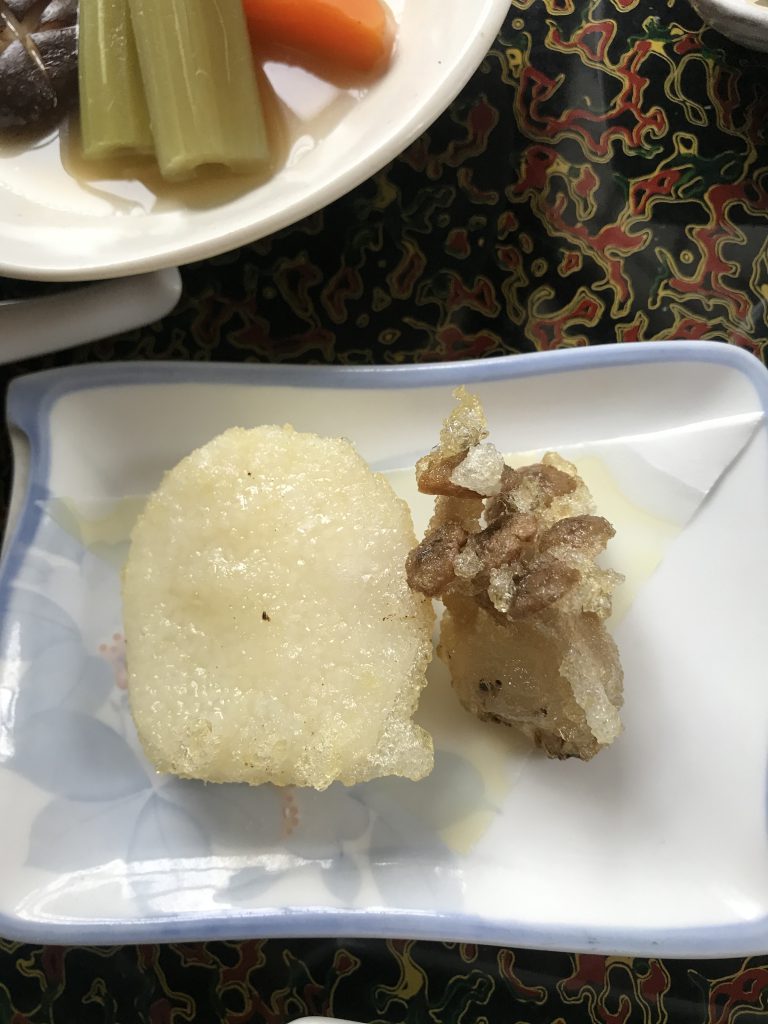
Then there were also yam and shimeji mushroom tempura. I personally found the tempura to be one of my favourite dishes in this meal. Not just because of its fried, crispy goodness, but because of its preparation. Tempura is traditionally prepared by using low protein flour (similar to cake flour), but the tempura we were served was made with potato starch instead. When fried, the potato starch coating creates a crisp and firm tempura, with a texture that is quite different from the regular kind. Regular tempura has a light and airy, flaky coating that melts in your mouth as you eat it. The potato starch tempura was similar taste wise, but the texture was starkly different, with much more of a crunch to it.
Stewed Vegetables
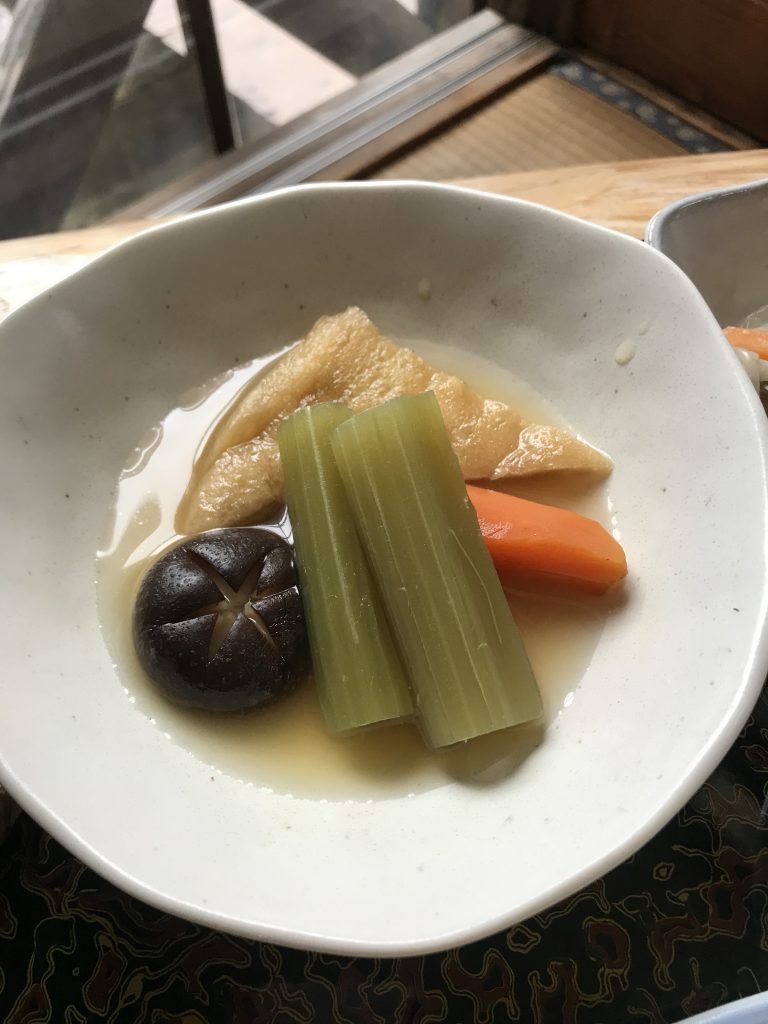
In this dish there was thinly sliced tofu, shiitake mushroom, carrot, and something that looked awfully similar to celery. With the way that previous sentence is written, you’ve probably caught on that what’s pictured isn’t celery. While from a distance it may seem similar, going in for a closer look (this may be a little tricky to see in the photo above, so be sure to check the other photos!) you’ll notice something that makes it very distinct from celery. That’s right, it’s fully cylindrical. This is Japanese butterbur (“fuki” in Japanese). Despite appearances, it tastes nothing like celery. It’s much firmer, and the closest comparable ingredient in terms of texture would be root vegetables, like the carrot also found in this dish. Not looking carefully and initially expecting celery, I was certainly surprised. These stewed vegetables had a nice subtle flavour and were quite tender.
Oyster Mushrooms
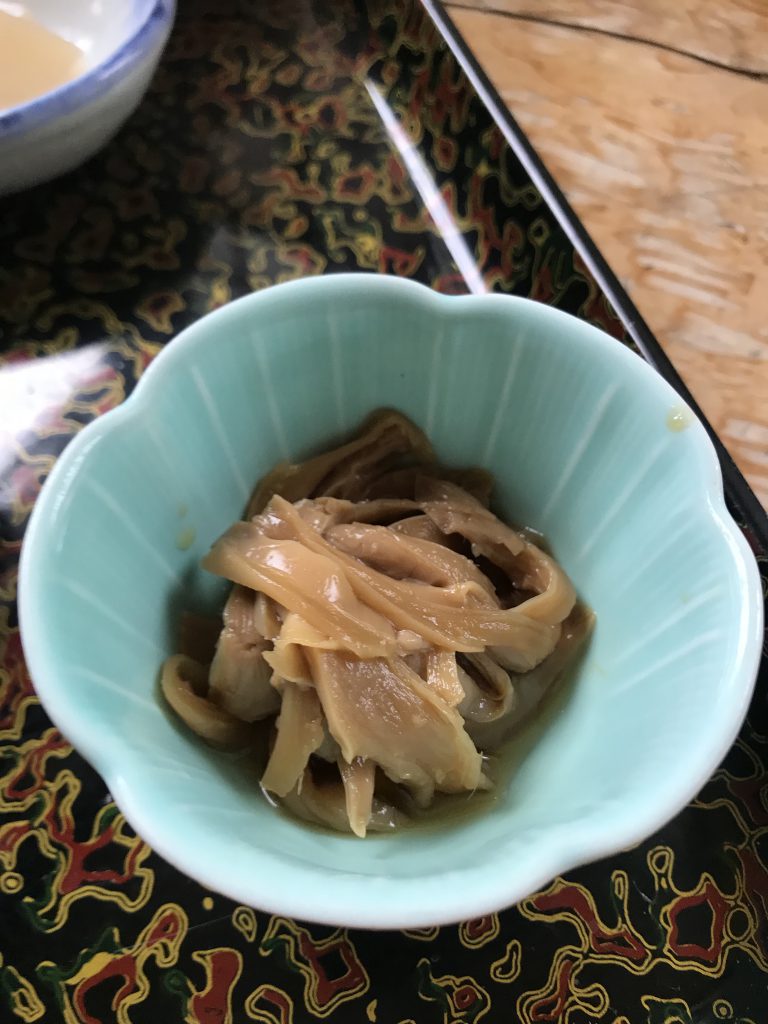
These are oyster mushrooms that have been seasoned with ginger. These were one of the highlights of the dish for me. I’d even go so far as to say that this was my favourite part of the meal. The light ginger flavours and the meat-like texture of the mushrooms were quite enjoyable and had me wishing that this was the meal’s main dish.
Konnyaku
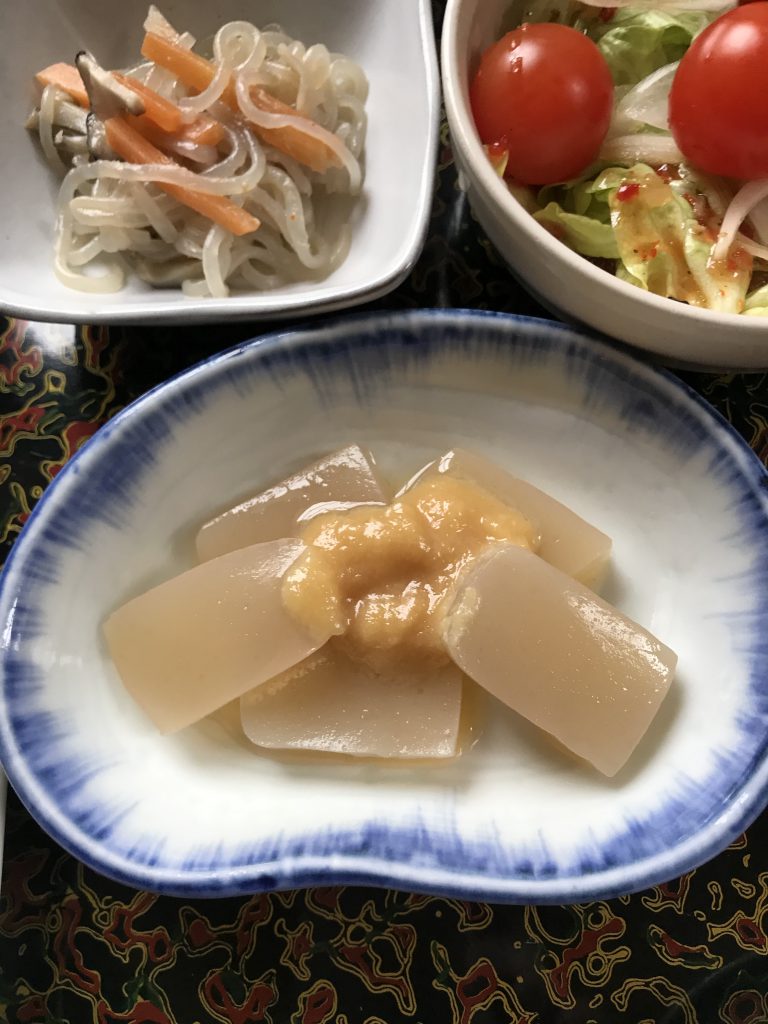
Konnyaku was also a feature of the meal. For those that don’t know, konnyaku is a jelly made from a plant of the same name. Although it is a jelly, it has a much firmer consistency than you’d be expecting. It has very little taste to it by itself. In the image above there are two applications of the jelly. In the centre of the image there are large slices of konnyaku topped with a miso and karashi (Japanese mustard) sauce. Konnyaku jelly is an interesting one. Despite its taste (or lack thereof) and not so unfamiliar texture, it may not be something that everyone enjoys. I’m not a picky eater by any means, but for some reason, it took me a few attempts before I was able to enjoy it. That said, the jelly with the sauce was exquisite. It definitely converted me into being a konnyaku lover.
The noodles in the top left are also made from konnyaku. This dish was lightly seasoned and mixed with some thinly sliced mushrooms and carrots. One amazing thing about konnyaku is that it’s basically zero calories! You can eat as much of it as you want, and you’ll burn more calories from chewing it than you’ll take in from eating it. Amazing stuff, right? What’s even better is that it cooks up deliciously. These noodles were great, and knowing that they were guilt free made them even more enjoyable! The only disappointment was that there wasn’t more.
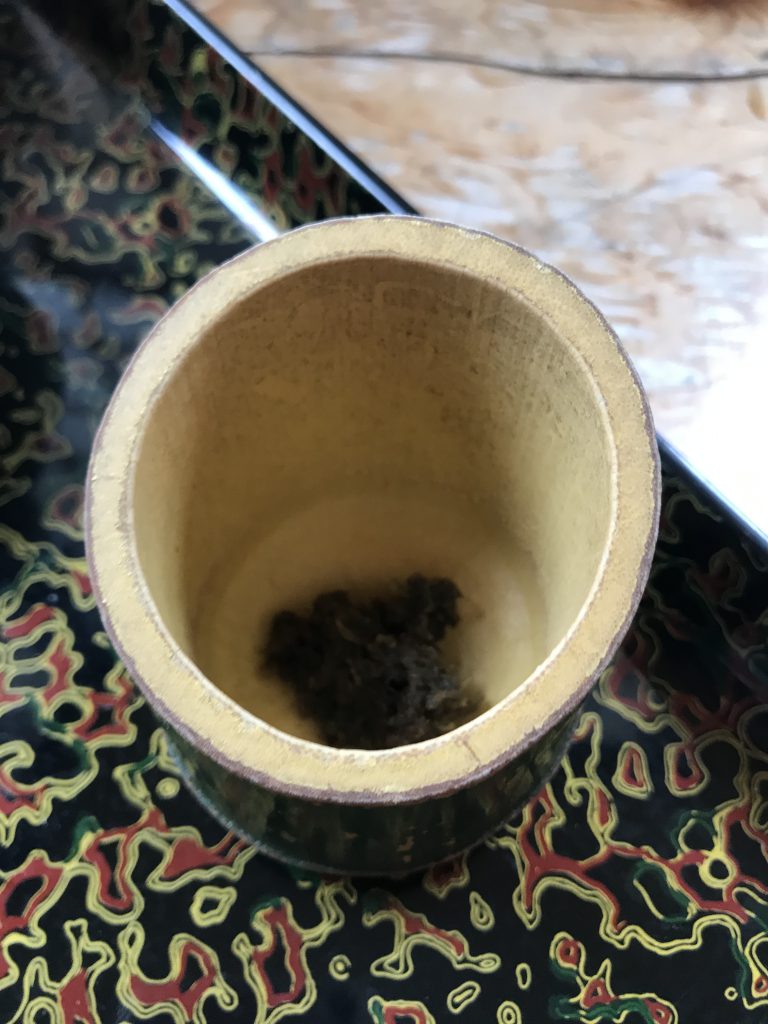
Hotpot
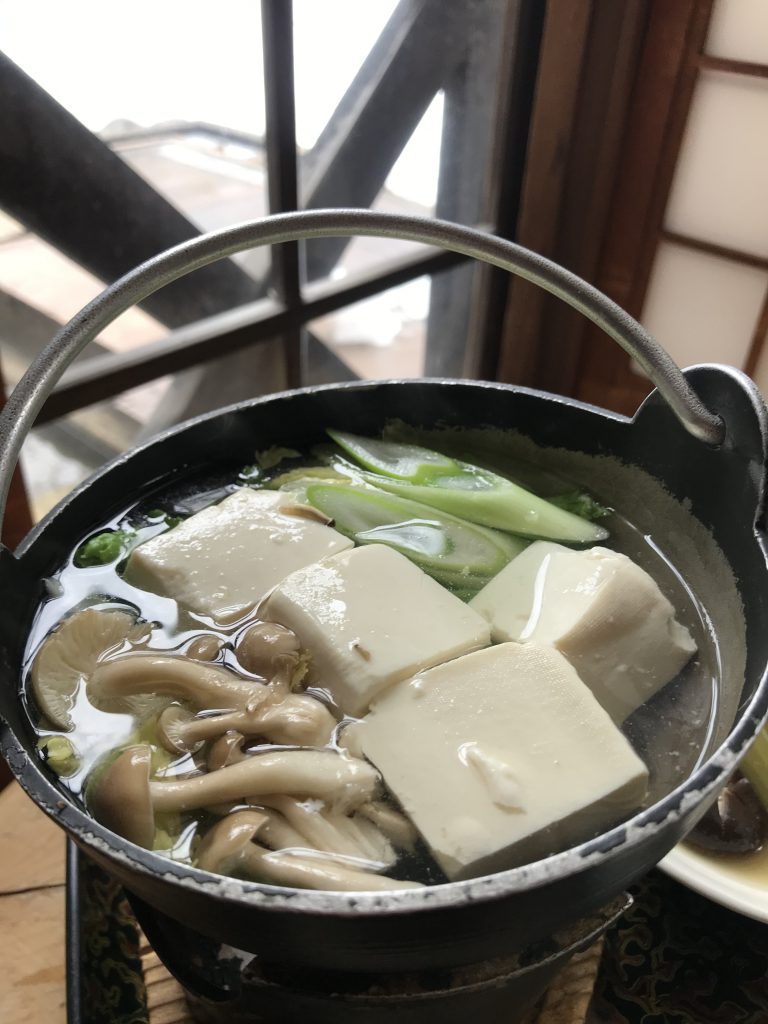
Now, let’s talk about the coolest (or hottest, depending on your perspective) looking part of the dish. The hotpot. As your meal is brought out to you, a flame underneath the hotpot is lit. The hotpot slowly comes to a boil and gently cooks the ingredients. Inside was tofu, shimeji mushroom, scallions, chrysanthemum greens, and Chinese cabbage all in a kombu (kelp) stock. The hotpot was relatively light, with a simple flavour. It blended well with the other dishes.
As mentioned in the beginning of this article, vegan food in Japan is less common outside of the major cities. Aoni Onsen is deep in the mountains in the Japanese countryside. It’s certainly a place you wouldn’t expect to find vegan cuisine, that’s for sure. Being deep in the mountains, there’s no phone signal. Electricity isn’t accessible either. Aoni Onsen is a place that has a large disconnection from the modern world.
It’s a calming place, free of distractions. Highly popular among tourists from Japan and abroad, Aoni has a reputation as a great place for a detox from modern life. The lack of signal and electricity really free you from distractions. You don’t have to worry about getting messages, emails or phone calls. You can free your mind completely, and just be. The food, vegan or otherwise is light and healthy. While it mightn’t be a physical detox, it’s certainly very nutritious. Having meals under lamplight only adds to the cosy, calming atmosphere. It’s the perfect place for a mental, and digital detox, a great place to get away from it all.

— Article From BACK LANE
